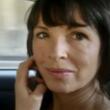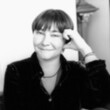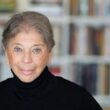The Lonely City: Adventures in the Art of Being Alone
(Libby/OverDrive eBook, Kindle)
Available Platforms
Description
Finalist for the National Book Critics Circle Award in Criticism#1 Book of the Year from Brain PickingsNamed a best book of the year by NPR, Newsweek, Slate, Pop Sugar, Marie Claire, Elle, Publishers Weekly, and Lit HubA dazzling work of biography, memoir, and cultural criticism on the subject of loneliness, told through the lives of iconic artists, by the acclaimed author of The Trip to Echo Spring.When Olivia Laing moved to New York City in her mid-thirties, she found herself inhabiting loneliness on a daily basis. Increasingly fascinated by the most shameful of experiences, she began to explore the lonely city by way of art. Moving from Edward Hopper’s Nighthawks to Andy Warhol’s Time Capsules, from Henry Darger’s hoarding to David Wojnarowicz’s AIDS activism, Laing conducts an electric, dazzling investigation into what it means to be alone, illuminating not only the causes of loneliness but also how it might be resisted and redeemed.Humane, provocative, and moving, The Lonely City is a celebration of a strange and lovely state, adrift from the larger continent of human experience, but intrinsic to the very act of being alive.
More Details
Similar Titles From NoveList
Similar Authors From NoveList
Published Reviews
Booklist Review
*Starred Review* Writer and critic Laing searches for answers to the puzzles of her life in the experiences and creative endeavors of others. In The Trip to Echo Spring (2014), she explores the impact alcoholism has had on various American writers. In her newest imaginative and poignant quest, shaped by her gift for entwining memoir with incisive biographical inquiries and astute interpretations, she looks to visual art for illumination of the true nature of loneliness. Her attempt to chart the complex relationship between loneliness and art, she explains, was catalyzed by a dark spell of alienation that seized her while she was living in wretched New York City sublets and bingeing on Internet videos and social media. Seeking an antidote, she immersed herself in Edward Hopper's life and paintings, responding most profoundly to his distinct perspective on urban life and the strange phenomenon of feeling hopelessly alone while surrounded by strangers. With loneliness as her lens, Laing discerns radical strategies of anxiety and consolation in Andy Warhol, from his persona as a living caricature to his worship of pop culture and reliance on the mediation of telephones, cameras, and tape recorders. As Laing chronicles the goings-on at Warhol's infamous Factory, she considers the paradox of both longing for acceptance and needing distance. The standoff between insiders and outsiders informs her sensitive telling of the tragic tale of Valerie Solanas, the woman who shot Warhol. Laing brings the same sympathetic receptivity to her profile of the self-taught Chicago artist Henry Darger, detecting compassion for abused and misfit children in his famously disturbing, violent, otherworldly illustrated epic. The artist who resonates the most for Laing is David Wojnarowicz, who survived a brutal boyhood and battering life on the streets before he began addressing issues of connection and aloneness in bold and unsparing photographs, films, drawings, and writings, which he hoped would help make somebody feel less alienated. Following Wojnarowicz's trail to the carnival of gay sex and rogue art on New York's abandoned piers in the 1970s and 1980s, Laing writes of her own transient years and wrestling with gender categories as a daughter raised by lesbians who felt that if she was anything, it was a gay boy. Ultimately, Wojnaraowicz delivers Laing to the 1980s AIDS epidemic, a hellish engine for loneliness that turned him into a grieving activist and then took his life. Laing perceives that loneliness is not only a sense of isolation but also of brokenness, and that art can be an annealing force. And like the artists she profiles, she refuses to look away from pain or simplify trauma, or deny anyone respect or dignity. Through her ardent research, empathetic response, original thought, courageous candor, and exquisite language, Laing joins the ever-growing pool of writers among them Ta-Nehisi Coates, Hope Jahren, Jhumpa Lahiri, Leslie Jamison, Helen Macdonald, Sally Mann, Patti Smith, Tracy K. Smith, Edmund de Waal, and Terry Tempest Williams who are transforming memoir into a daring and dynamic literary form of discovery that laces the stories of individuals into the continuum of humanity and the larger web of life on Earth to provocative and transforming effect.--Seaman, Donna Copyright 2016 Booklist
Publisher's Weekly Review
The lonely city of the title is teeming with painters, filmmakers, writers, and thinkers. In her new book, Laing (The Trip to Echo Spring) creates a "map of loneliness," tracking its often-paradoxical contours in her own life as a transplant to New York City and traces how loneliness can inspire creativity. The central figures of the book-Henry Darger, Edward Hopper, Andy Warhol, and David Wojnarowicz-were all "hyper-alert to the gulfs between people, to how it can feel to be islanded amid a crowd." By focusing on four artists (others, like Billie Holiday, also make appearances), Laing's writing becomes expansive, exploring their biographies, sharing art analysis, and weaving in observations from periods of desolation that was at times "cold as ice and clear as glass." She invents new ways to consider how isolation plays into art or even the Internet (which turns her into an obsessed teenager, albeit one who calls the screen her "cathected silver lover"). For once, loneliness becomes a place worth lingering. (Mar.) © Copyright PWxyz, LLC. All rights reserved.
Booklist Reviews
*Starred Review* Writer and critic Laing searches for answers to the puzzles of her life in the experiences and creative endeavors of others. In The Trip to Echo Spring (2014), she explores the impact alcoholism has had on various American writers. In her newest imaginative and poignant quest, shaped by her gift for entwining memoir with incisive biographical inquiries and astute interpretations, she looks to visual art for illumination of the true nature of loneliness. Her "attempt to chart the complex relationship between loneliness and art," she explains, was catalyzed by a dark spell of alienation that seized her while she was living in wretched New York City sublets and bingeing on Internet videos and social media. Seeking an antidote, she immersed herself in Edward Hopper's life and paintings, responding most profoundly to his distinct perspective on urban life and the strange phenomenon of feeling hopelessly alone while surrounded by strangers. With loneliness as her lens, Laing discerns radical strategies of anxiety and consolation in Andy Warhol, from his persona as a living caricature to his worship of pop culture and reliance on the mediation of telephones, cameras, and tape recorders. As Laing chronicles the goings-on at Warhol's infamous Factory, she considers the paradox of both longing for acceptance and needing distance. The standoff between insiders and outsiders informs her sensitive telling of the tragic tale of Valerie Solanas, the woman who shot Warhol. Laing brings the same sympathetic receptivity to her profile of the self-taught Chicago artist Henry Darger, detecting compassion for abused and misfit children in his famously disturbing, violent, otherworldly illustrated epic. The artist who resonates the most for Laing is David Wojnarowicz, who survived a brutal boyhood and battering life on the streets before he began addressing "issues of connection and aloneness" in bold and unsparing photographs, films, drawings, and writings, which he hoped would help "make somebody feel less alienated." Following Wojnarowicz's trail to the carnival of gay sex and rogue art on New York's abandoned piers in the 1970s and 1980s, Laing writes of her own transient years and wrestling with gender categories as a daughter raised by lesbians who felt that if she "was anything, it was a gay boy." Ultimately, Wojnaraowicz delivers Laing to the 1980s AIDS epidemic, a hellish engine for loneliness that turned him into a grieving activist and then took his life. Laing perceives that loneliness is not only a sense of isolation but also of brokenness, and that art can be an annealing force. And like the artists she profiles, she refuses to look away from pain or simplify trauma, or deny anyone respect or dignity. Through her ardent research, empathetic response, original thought, courageous candor, and exquisite language, Laing joins the ever-growing pool of writers—among them Ta-Nehisi Coates, Hope Jahren, Jhumpa Lahiri, Leslie Jamison, Helen Macdonald, Sally Mann, Patti Smith, Tracy K. Smith, Edmund de Waal, and Terry Tempest Williams—who are transforming memoir into a daring and dynamic literary form of discovery that laces the stories of individuals into the continuum of humanity and the larger web of life on Earth to provocative and transforming effect. Copyright 2014 Booklist Reviews.
Library Journal Reviews
Laing opened her book career in 2014 with The Trip to Echo Spring: On Writers and Drinking, which was short-listed for the Ondaatje Prize and won front-page coverage in the New York Times Book Review. Her new book considers the concept of "aloneness" from the perspective of key artists, focusing on Edward Hopper, Andy Warhol, Henry Darger, and David Wojnarowicz and touching on luminaries from Alfred Hitchcock to Nan Goldin to Billie Holiday. Is this cool, or what?
[Page 63]. (c) Copyright 2015 Library Journals LLC, a wholly owned subsidiary of Media Source, Inc. No redistribution permitted.Publishers Weekly Reviews
The lonely city of the title is teeming with painters, filmmakers, writers, and thinkers. In her new book, Laing (The Trip to Echo Spring) creates a "map of loneliness," tracking its often-paradoxical contours in her own life as a transplant to New York City and traces how loneliness can inspire creativity. The central figures of the book—Henry Darger, Edward Hopper, Andy Warhol, and David Wojnarowicz—were all "hyper-alert to the gulfs between people, to how it can feel to be islanded amid a crowd." By focusing on four artists (others, like Billie Holiday, also make appearances), Laing's writing becomes expansive, exploring their biographies, sharing art analysis, and weaving in observations from periods of desolation that was at times "cold as ice and clear as glass." She invents new ways to consider how isolation plays into art or even the Internet (which turns her into an obsessed teenager, albeit one who calls the screen her "cathected silver lover"). For once, loneliness becomes a place worth lingering. (Mar.)
[Page ]. Copyright 2016 PWxyz LLCReviews from GoodReads
Citations
Laing, O. (2016). The Lonely City: Adventures in the Art of Being Alone . Picador.
Chicago / Turabian - Author Date Citation, 17th Edition (style guide)Laing, Olivia. 2016. The Lonely City: Adventures in the Art of Being Alone. Picador.
Chicago / Turabian - Humanities (Notes and Bibliography) Citation, 17th Edition (style guide)Laing, Olivia. The Lonely City: Adventures in the Art of Being Alone Picador, 2016.
Harvard Citation (style guide)Laing, O. (2016). The lonely city: adventures in the art of being alone. Picador.
MLA Citation, 9th Edition (style guide)Laing, Olivia. The Lonely City: Adventures in the Art of Being Alone Picador, 2016.
Copy Details
| Collection | Owned | Available | Number of Holds |
|---|---|---|---|
| Libby | 1 | 0 | 3 |




































